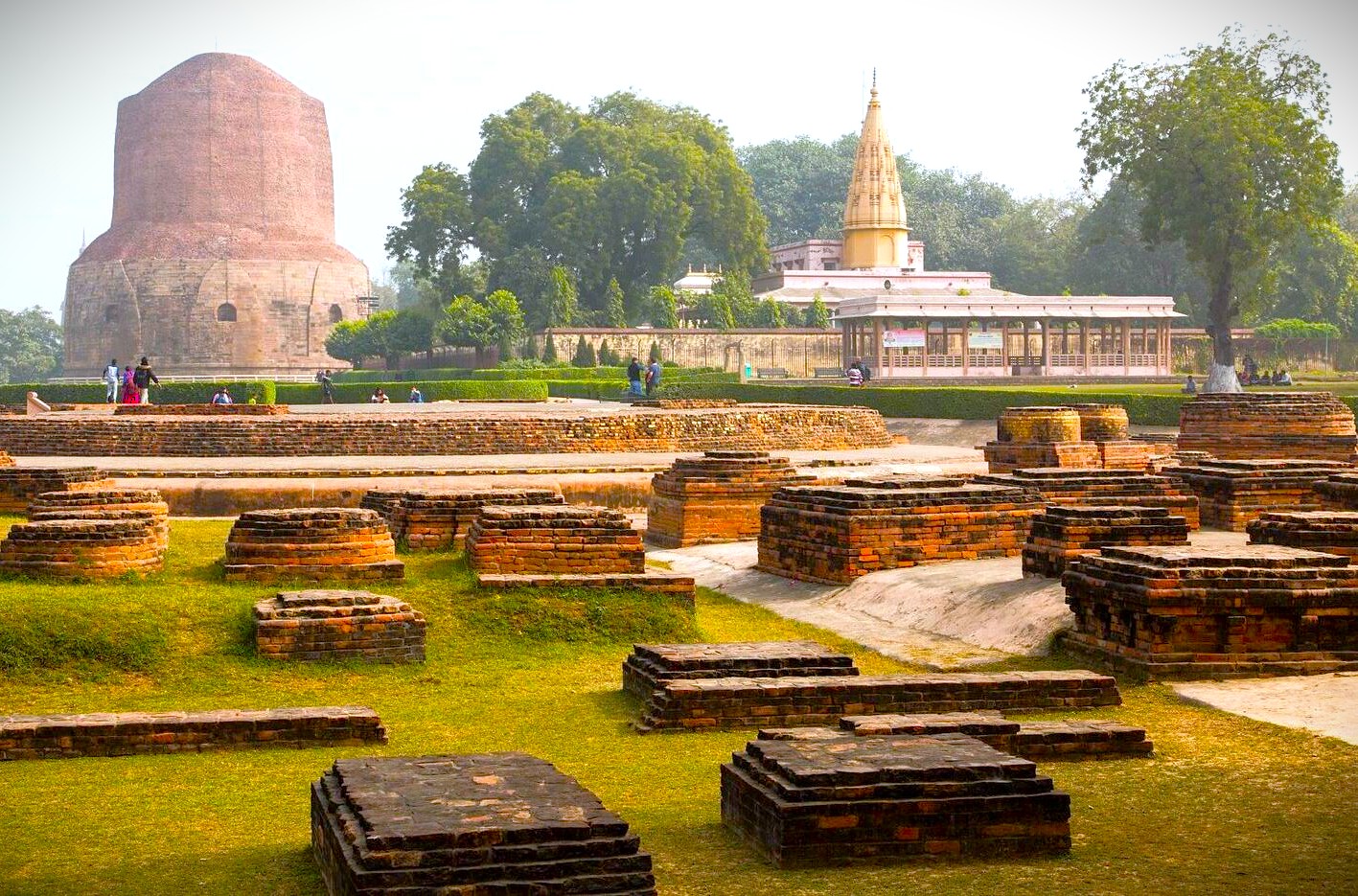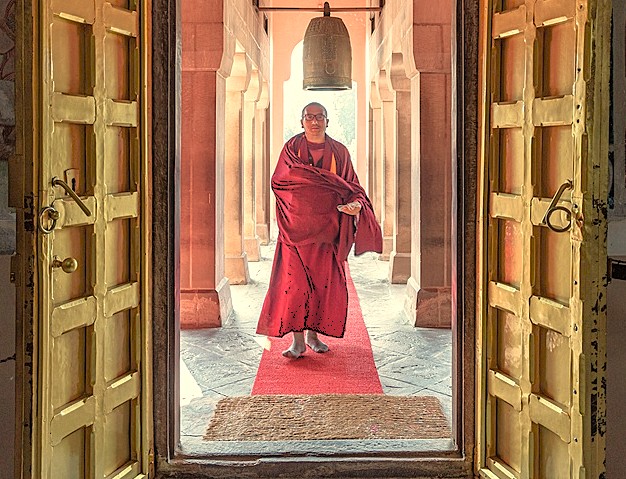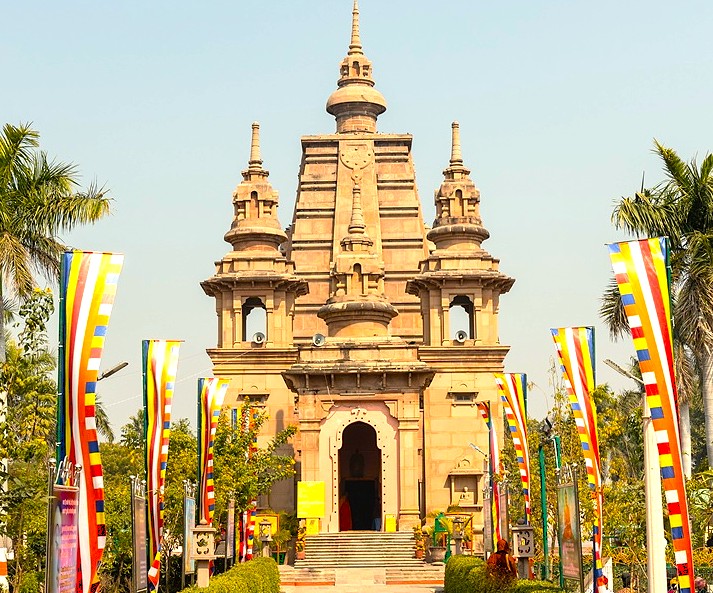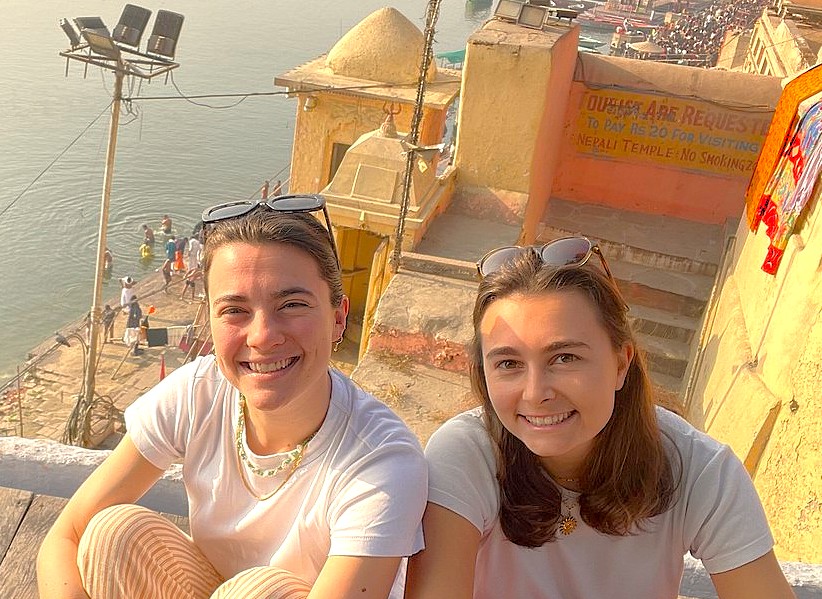Ancient Encounter
Sarnath Varanasi India
Mother Masala Tours
Where Buddha Taught
Sarnath Varanasi India. Located in Uttar Pradesh, is renowned as one of the four major pilgrimage sites in Buddhism. The name “Sarnath” translates to “the place where the deer roam,” referencing the nearby deer park where Gautama Buddha delivered his first sermon after attaining enlightenment. This significant historical event occurred around 528 BCE, marking the beginning of Buddhism as a major world religion. Originally a simple hunting ground during the time of the King Ashoka - 3rd century BCE, it evolved into a thriving place of religious activity. Ashoka, a pivotal figure in promoting Buddhism, constructed several stupas and monasteries in Sarnath, including the famous Dhamekha Stupa, erected around 500 CE, to commemorate Buddha's teachings. These efforts intensified after the Mauryan Dynasty, as many Buddhist monuments were constructed, attracting monks, scholars, and pilgrims from all over.

Sarnath Varanasi India: Sacred Spaces
Home to numerous artifacts that reflect its rich Buddhist heritage. The most notable site is the Dhamekha Stupain in Sarnath Varanasi, where it is believed that Buddha gave his first sermon. This structure, made of solid brick and stone, was built in the 5th century, standing approximately 43 meters tall. Surrounding it are remnants of ancient monasteries, stone carvings, and significant inscriptions that mark pivotal moments in Buddhist history. In addition to the stupas, the Sarnath Archaeological Museum houses an impressive collection of ancient artifacts, including statues of Buddha in various postures, stupas, and intricate carvings. The museum itself was established in 1910 and serves as a repository of the rich cultural heritage preserved in this sacred land.
Ancient Mosaics: Impeccable Craftsmanship

The craftsmanship reflects the dedication of artisans from bygone eras. The ruins of the stupas and monasteries display exquisite stone carvings, symbolizing various Buddhist motifs. One significant example is the Ashoka Pillar, which dates back to the 3rd century BCE. This polished sandstone pillar features a lion capital, which is now the national emblem of India. The skill involved in creating these enduring structures illustrates the remarkable artistry of ancient craftsmen. Many of the sculptures depict scenes from Buddha's life, each carved with intricate details that convey spiritual significance.
The Pulse of the Local Community
Sarnath Varanasi India. The community surrounding Sarnath Varanasi, embodies a strong sense of spirituality and hospitality. Locals take pride in their heritage and the role they play in preserving and promoting the teachings of Buddha. This area is characterized by friendly interactions between residents and pilgrims, creating an inviting atmosphere for everyone. As we walk through the serene pathways leading to the stupas, the locals often share stories of their faith, traditions, and the significance of Sarnath in the Buddhist world. The commitment to maintaining their cultural identity fosters a close-knit community, reinforcing both the historical and contemporary importance of the area. This sense of belonging is palpable, enriching our experience as we engage with the deep-rooted values that shape life in Sarnath.
Capturing the Magic: A Photographic Haven

Sarnath offers many excellent opportunities for photography. Key subjects include the impressive Dhamekh Stupa and the ancient pillars, which provide strong focal points for any composition. The light during the late afternoon and dusk is particularly favorable, casting a warm glow on the historic ruins and creating a peaceful atmosphere perfect for capturing memorable images. The site's layout allows for a variety of shots, from wide views encompassing the stupas against the sky to detailed close-ups of the intricate carvings on stone relics. The well-maintained gardens and surrounding greenery add natural frames and color to the historical structures.
A Culinary Journey: Savor the Flavour
Known for its spiritual significance, Sarnath Varanasi's culinary offerings provide a unique taste of local culture. One must-try dish is Chaat, a popular street food across North India. In Sarnath, you'll experience a special version known as Banarasi Chaat, a delightful mix of fried dough, boiled potatoes, chickpeas, seasoned with a unique blend of spices, and topped with tangy chutneys. The preparation for this dish is a careful process that highlights local ingredients. From the crispiness of the puris to the freshness of the tamarind and mint chutneys, each taste represents the flavors that define the region's cuisine.
The Connection with the Gods
The connection to deities is palpable in Sarnath Varanasi, where Gautama Buddha himself serves as the focal point of worship. According to tradition, after achieving enlightenment, he traveled to Sarnath to share his insights with his first disciples.There are many statues and images of Buddha in various postures, symbolizing different aspects of his teachings. These sacred representations are revered by followers, who come to meditate and seek blessings.
Festivals of Devotion: Honouring the Sacred and the Divine
Sarnath Varanasi India. Sarnath hosts several festivals that highlight its spiritual significance. One of the major events is Buddha Purnima, celebrated on the full moon in April or May. This festival marks the birth, enlightenment, and death of Gautama Buddha, attracting thousands of devotees who come to pay their respects at important Buddhist sites. During this celebration, the atmosphere is filled with chants and prayers as luminaries, incense, and flowers adorn the stupas and temples. Local monks lead ceremonies that emphasize the principles of compassion and generosity. Another important festival is Ashadha Purnima, known as Dharma Day, celebrated in July, which commemorates Buddha’s first sermon, reinforcing the ongoing dedication to his teachings.
Serendipitous Meetings: Beyond the Main Path

As we navigate the quieter lanes of Sarnath, away from the main monuments, we encounter hidden gems waiting to be discovered. Small, family-run shops sell an array of handcrafted items, from intricate wooden sculptures of Buddhist deities to delicate paintings depicting scenes from the Buddha's life. You might also find hand-thrown pottery or small, woven textiles inspired by monastic robes. These local artisans pour their heart and soul into each piece. A conversation often reveals the deep personal and spiritual significance behind their work. They offer a genuine glimpse into their remarkable skill and the timeless stories.
Ancient Technologies: Sacred Sound, Geometry & Astrological Influences
Sarnath Varanasi India. The design of sites around Sarnath incorporates Vastu Shastra principles, sacred geometry and acoustics that enhance the spiritual experience during rituals and gatherings. The layout of the stupas and surrounding structures is meticulously planned to resonate sound, creating an amplification of chants and prayers that echo throughout the area. The materials used in construction, such as sandstone and marble, contribute to the quality of sound, emphasizing the importance of both spirituality and physics in ancient practices. Solfeggio frequencies like 396 Hz, associated with liberating fear, are believed to resonate during prayers, working on the emotional well-being of practitioners. Structures were consciously designed to align with astrological patterns, adding another layer of complexity to the spiritual experience.
Resilience and Renewal: Overcoming Adversity’s Challenges

Sarnath, near Varanasi, has faced immense challenges throughout its long history. For centuries, it flourished as a paramount center of Buddhist learning and pilgrimage. However, a devastating blow occurred in 1194 AD when Turkish invader Qutub-ud-din Aibak and his forces swept through the region, leading to the widespread destruction of its magnificent temples and monasteries. This catastrophic event brought turmoil to the local community and pushed the sacred site into a long period of decline and obscurity, with its ruins eventually being buried. The resilience of its legacy, however, shone through centuries later. The rediscovery began with 18th-century restoration initiatives.
Urban Legends: Strange Sightings, Myths and Mysteries
Steeped in legends and stories that enhance its mystical quality. One popular tale is that of the Enlightened Deer, believed to roam the grounds of the ancient deer park. Local lore states that those who encounter the deer will be blessed with wisdom and spiritual insight. Another legend revolves around the Buddha’s Seat, a stone marking the exact spot where he delivered his first sermon. Locals recount stories of miraculously serene experiences reported by those who meditate at this location.
Step into the Enigma - Your Journey Starts Now

When visiting Sarnath, we step into one of the world's most significant Buddhist pilgrimage sites. The first thing you'll see is the tranquil park containing the archaeological ruins. The most prominent structure is the massive Dhamek Stupa, a cylindrical monument marking the spot where the Buddha is believed to have delivered his first sermon. We walk around its base, observing the ancient carvings. The remains of monasteries and the famous Ashokan Pillar, with its four-lion capital (the original is in the museum) that is now India's national emblem. A key activity is visiting the Sarnath Archaeological Museum, an incredible collection of artifacts providing deep historical context.
Symphony of Generosity: Offerings from Wanderers to Residents
Sarnath Varanasi India. The relationship between the local community and those who journey to Sarnath is deeply harmonious and mutually beneficial, creating a positive cycle of exchange. As visitors, when we engage with the culture, we do more than just observe; we gain a profound understanding of a living spiritual heritage. Purchasing handcrafted art from a small shop supports an artisan's family and helps preserve traditional skills that might otherwise fade. In return, the community shares its stories and hospitality, enriching our travel experience beyond measure.